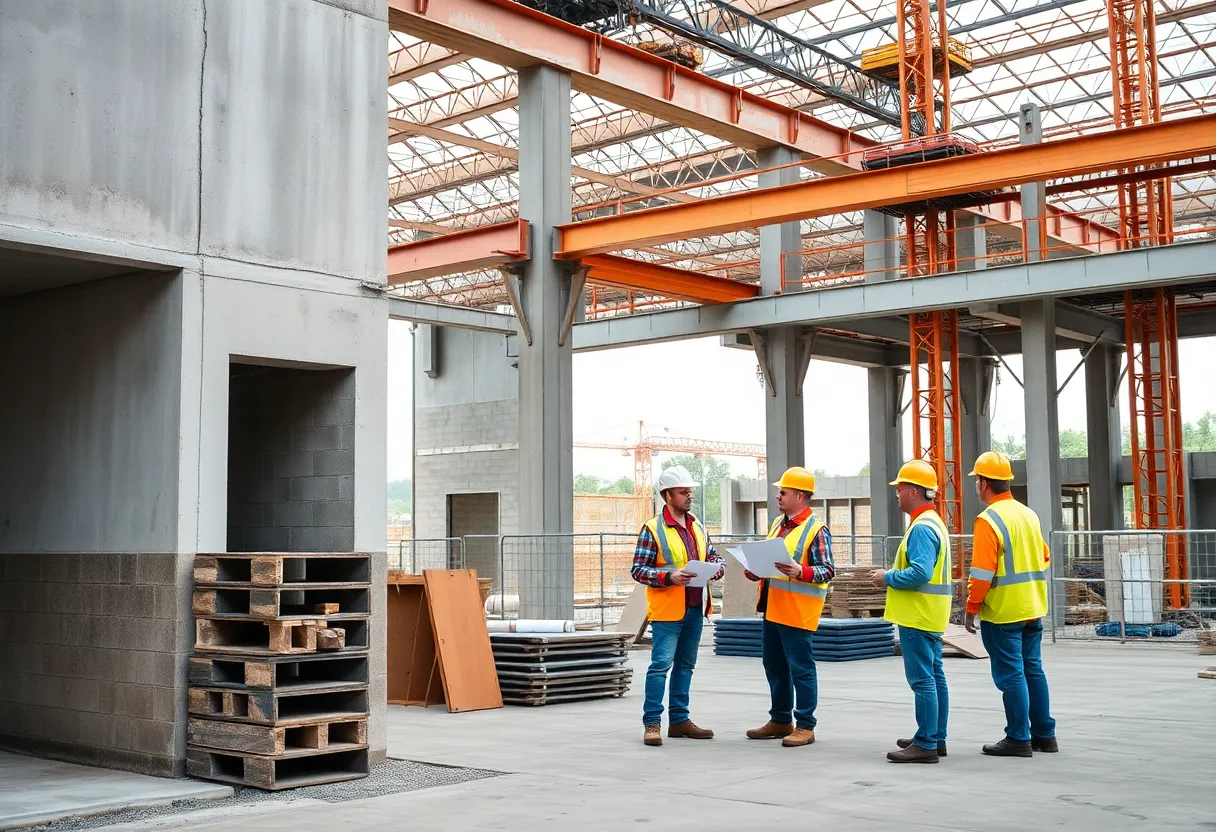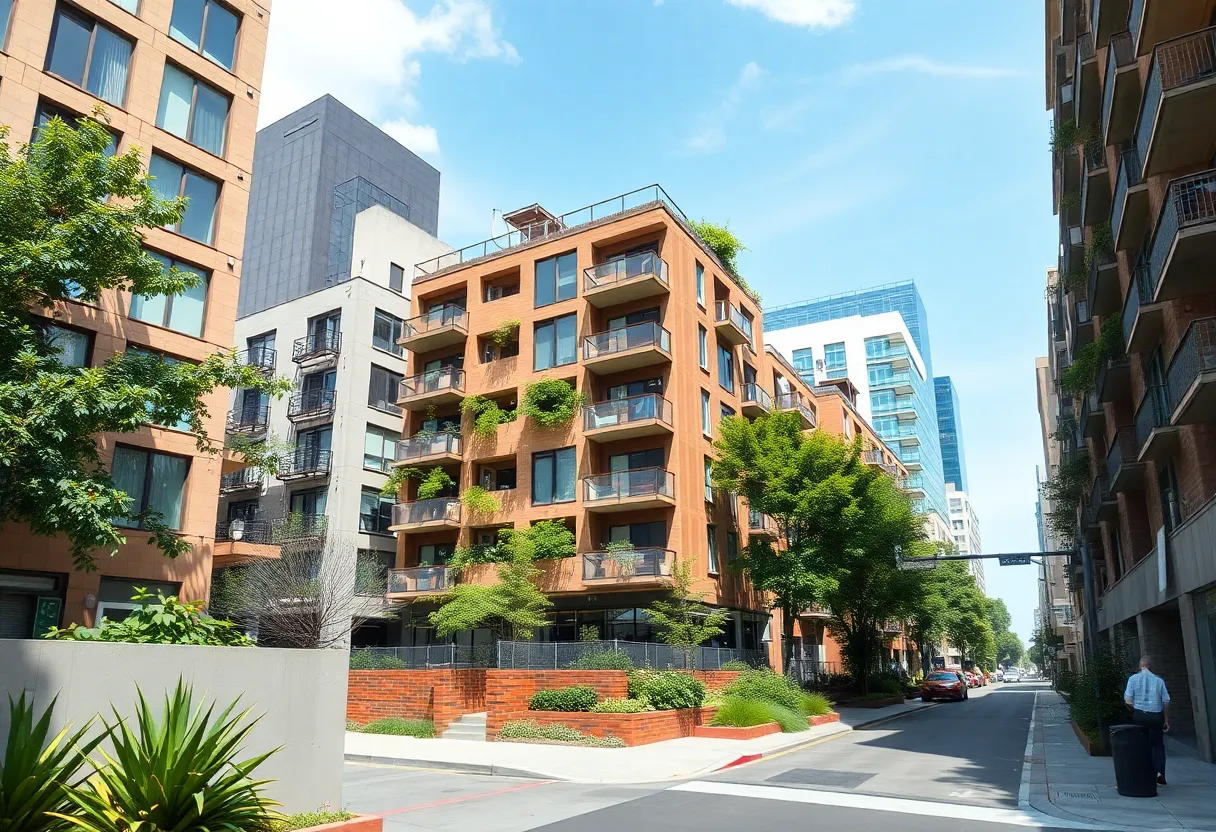News Summary
California has launched the ‘Building With Resilience’ campaign to promote the use of non-combustible materials in construction. This initiative aims to enhance fire safety, reduce insurance costs, and meet climate objectives. By encouraging the adoption of materials like concrete, metal, and fiber-cement, the campaign seeks to prepare communities for future wildfires while collaborating with lawmakers and local experts. The initiative highlights the importance of durable structures and offers potential insurance discounts for homeowners choosing fire-resistant materials.
California has initiated a campaign named “Building With Resilience” to encourage the use of non-combustible materials in construction as communities rebuild following recent wildfires. The campaign’s primary goal is to enhance fire safety, lower insurance costs, and meet climate objectives through the adoption of materials that do not burn, rot, or rust.
The campaign promotes materials such as concrete, masonry, metal, stone, fiber-cement, and asphalt, which are all readily available in the state. Robert Dugan, leader of the California Construction and Industrial Materials Association, emphasized the necessity for clear standards regarding fire resilience in construction choices. The initiative aims to bring together experts to prioritize fire-resistant materials that align with California’s environmental goals.
As California rebuilds its infrastructure, there’s a recognized need to utilize fire-resistant materials for critical structures, including roads and water systems, which are vital during fire events. The urgency of this campaign is underscored by data collected from the January 2025 fires, which demonstrated how non-combustible materials played a crucial role in preventing total losses to buildings.
Significant Findings and Impacts
A study conducted by the Insurance Institute for Business and Home Safety examined structures impacted by major fire incidents in California, highlighting that non-combustible materials can significantly mitigate fire damage. The study revealed a direct correlation between a building’s ability to withstand wildfires and both the proximity of structures and the use of fire-resistant materials.
In line with this initiative, PHNX Development is constructing homes using non-combustible materials, specifically concrete and steel, thereby completely avoiding the use of wood. These new homes incorporate Insulated Concrete Forms (ICF) that are designed to withstand flames and minimize potential structural damage.
Insurance and Cost Benefits
In an effort to support the use of non-combustible materials, Mercury Insurance is offering potential discounts for homeowners who opt for these fire-resistant homes. The discounts can reach up to 45% compared to traditional insurance coverage, incentivizing more residents to adopt safer building practices.
Architectural Trends and Practices
Architects are increasingly shifting towards fire-resistant designs, moving away from traditional combustible materials which heighten fire risk. This change not only supports the immediate safety of structures but also reflects a broader strategy to prepare communities against climate change and natural disasters.
Community engagement is also a critical component of this campaign. Officials are working to raise awareness about the importance of structural durability and the strategies available to mitigate the spread of wildfires. Techniques such as defensible space landscaping are being promoted to create zones free of combustible materials, which can protect homes in wildfire-prone areas.
Legislation and Community Collaboration
The campaign aims to work closely with lawmakers and local communities to bolster awareness and support for the policy changes necessary for enhancing fire resilience. Historically, many homes lost in the recent wildfires were built prior to California’s enhanced building codes for wildfire-prone regions and often utilized non-resilient building materials.
This comprehensive initiative prominently focuses on cross-sector collaboration to advance safer building practices throughout the state. By integrating non-combustible materials into construction standards, California aims to build safer structures while also addressing environmental sustainability and reducing risks associated with future fire disasters.
As communities engage in rebuilding efforts, it becomes increasingly vital that all stakeholders—builders, homeowners, and government officials—collaborate in fostering a safer future that is resilient to wildfire threats, ultimately aiming to transform how California rebuilds for the future.
Deeper Dive: News & Info About This Topic
- Business Wire: Building With Resilience
- Fast Company: Fire Resistant House Design
- ABC30: California Insurance Crisis
- DWM Magazine: Role of Glass in Fire Safety
- CBS News: Fireproof Modular House
- Wikipedia: Fire Resistance
- Google Search: Fire Resistant Building Materials
- Google Scholar: Fire Resistant Homes
- Encyclopedia Britannica: Wildfires and Building Resilience
- Google News: California Wildfires Building Materials

Author: STAFF HERE HOLLYWOOD
The Hollywood Staff Writer represents the experienced team at HEREHollywood.com, your go-to source for actionable local news and information in Hollywood, Los Angeles County, and beyond. Specializing in "news you can use," we cover essential topics like product reviews for personal and business needs, local business directories, politics, real estate trends, neighborhood insights, and state news affecting the area—with deep expertise drawn from years of dedicated reporting and strong community input, including local press releases and business updates. We deliver top reporting on high-value events such as the Hollywood Bowl summer concerts, the Hollywood Christmas Parade, film premieres at TCL Chinese Theatre, and festivals at the Magic Castle. Our coverage extends to key organizations like the Hollywood Chamber of Commerce and Visit Hollywood, plus leading businesses in entertainment, dining, and tourism that define the local economy. As part of the broader HERE network, including HERELosAngeles.com, HEREBeverlyHills.com, HEREAnaheim.com, and HEREHuntingtonBeach.com, we provide comprehensive, credible insights into Southern California's dynamic landscape.





